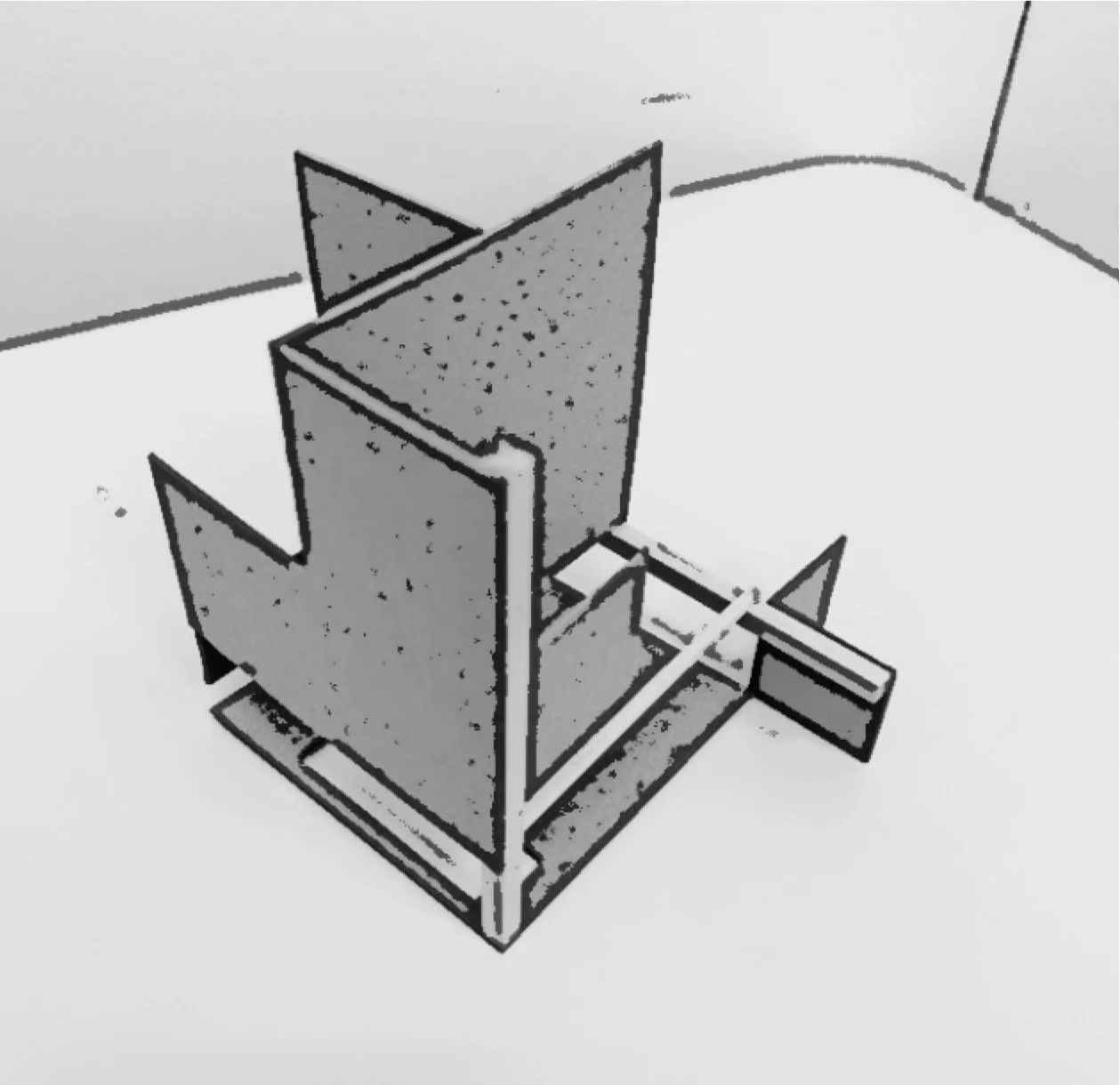Piet Mondrain PROJECT
Semester: Spring 2024 | UMD
Location: N/A
Design Process
Red Blue Yellow by Piet Mondrain
Model Making
This project is inspired by Piet Mondrian’s Red Blue Yellow (1930), a composition defined by bold primary colors, black lines, and a strict geometric grid. I was drawn to the balance between order and asymmetry in the painting. To translate this into architecture, I treated each color block as a potential spatial volume or void, and the black lines as structural or spatial dividers. The design began with analyzing the painting’s composition—how elements relate, overlap, and create rhythm. From there, I abstracted those relationships into planes and forms that intersect and define space, aiming to preserve Mondrian’s sense of harmony while introducing depth and movement.
At the beginning of the project, I started with a series of sketch drawings to explore how Mondrian’s composition could translate into three dimensions. Through quick studies, I tested different ways of turning flat color blocks into spatial elements—volumes, voids, and planes—and experimented with layering, proportion, and balance. These sketches helped me visualize the potential forms and guided me toward an idea that felt both true to Mondrian’s logic and expressive in physical space. It was through this hands-on process that the core concept of intersecting planes and open volumes began to take shape.
Let me know if you'd like to include something more personal, like how you felt during the process or what surprised you most!
Inspired by Mondrian’s Red Blue Yellow, this model transforms his composition into spatial form. It explores balance and asymmetry through intersecting planes, turning a two-dimensional painting into a three-dimensional experience.
For the model-making process, I primarily used chipboard and wood sticks to represent the planes and lines from Mondrian’s painting. I began by selecting one side of the composition to replicate directly onto chipboard, carefully cutting out the shapes with an X-Acto knife to match the original layout. This surface became the foundation of the model. From there, I layered and assembled vertical and horizontal planes, using wood sticks to represent Mondrian’s black lines and to support spatial depth. The contrast between solid chipboard and linear wood elements helped bring the flat image to life in a structural, three-dimensional form.










